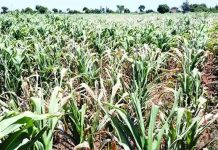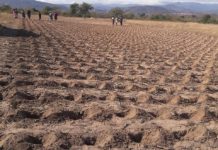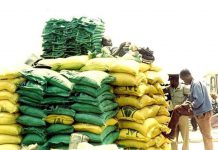RAINS received in Bulawayo two weeks ago have contributed only two percent inflows into city dams, latest council rainfall water statistics have revealed.
Recently, most parts of Matabeleland province received their first rains which brought joy and relief to Bulawayo residents and farmers who were enduring unprecedented high heat which resulted in the death of a lot of livestock.
However, the rains did not make any meaningful addition to the city’s diminishing water levels.
According the city water statistics seen by New Zimbabwe.com, dams received a total of 4 007 890 cubic metres of water, pushing the total volume of water in the dams to 152 777 978 cubic metres.
Two of the city’s dams, Umzingwane, which currently stands at 4,85 percent and Lower Ncema received zero inflows.
Council has so far already decommissioned one of its six supply dams, Upper Ncema while Umzingwane will be decommissioned in the next few days.
According to the statistics, the only dams that received significant inflows are Mtshabezi dam (2, 1 million cubic metres), Inyankuni (1, 5 million cubic metres), Insiza Mayfair (101 000 cubic metres) and Upper Ncema (125 000 cubic metres).
Last week, the city introduced a tighter 96-hour weekly water shedding programme citing continued lack of capacity to maintain normal water supplies.
Council has been forced to come up with drastic measures to preserve the necessity.
This includes the “big flush” system in which residents were asked to simultaneously flush their toilets between 6am to 6:30 am and between 8pm and 8:30 pm everyday to try and curb sewer bursts in the morning.






